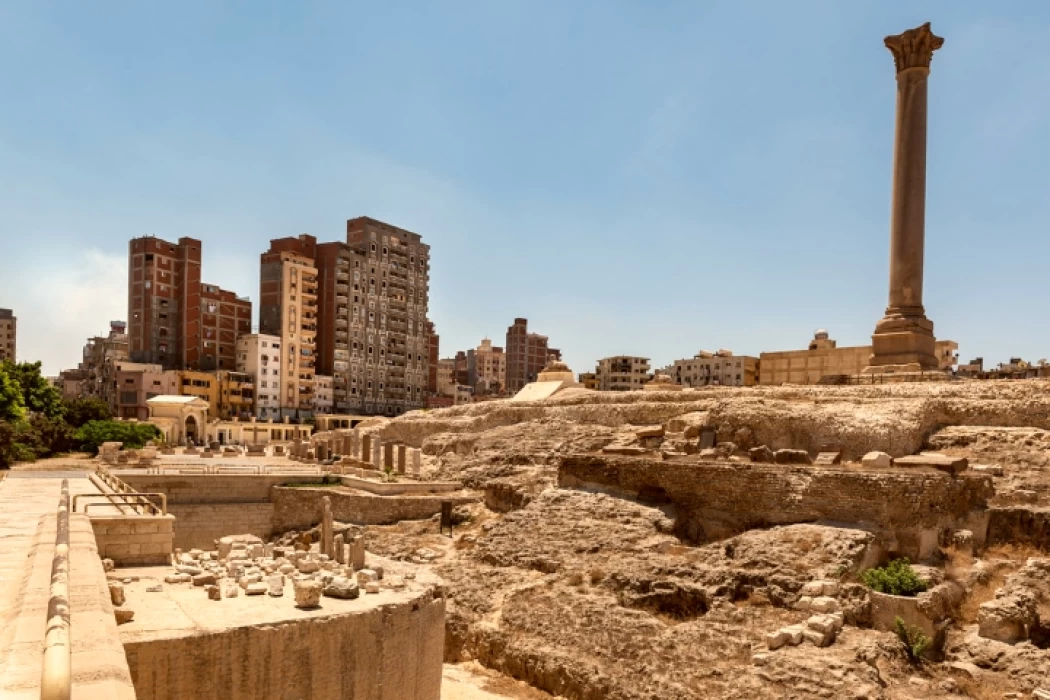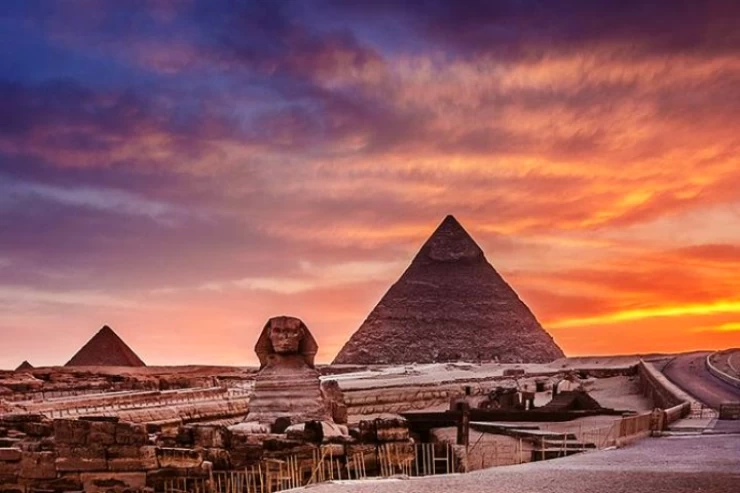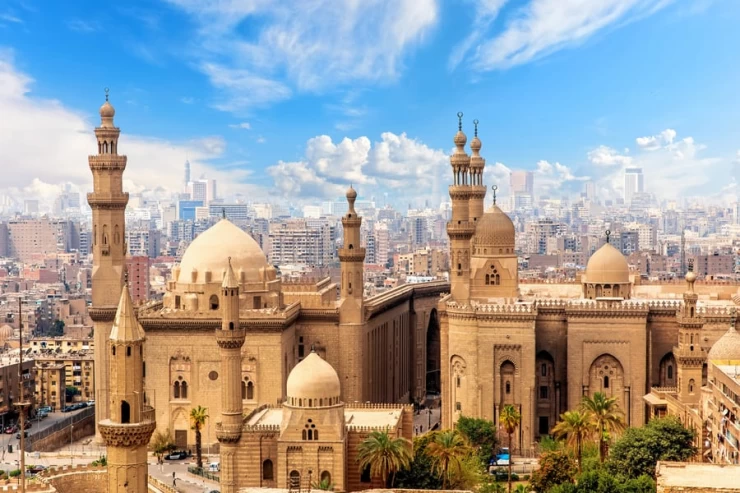
Serapeum of Alexandria
The "Temple of the Serapeum" is the most famous tourist attraction in Alexandria, and it is located specifically between the area of the cemetery of the Amud al-Sawari and the Kom al-Shuqafa plateau. Its history begins more than 2300 years ago, specifically during the reign of "Ptolemy the First", the founder of the Ptolemaic state in Egypt, who took power after the death of Alexander the Great. In 323 BC, who wanted to unite the Egyptians and the Greeks to worship one god, so he formed a committee of Egyptian and Greek religious scholars, agreed that that religion would be the holy trinity that includes the god "Serapis" and the goddess "Isis" and her son, the god "Harpocrates".
That temple began with a simple and modest design in the Greek style, and during the reign of "Ptolemy II", who took power in 284 BC, it began to abound with Egyptian architectural elements, as he added to it a great library, less in size than the Library of Alexandria, but it was more famous, as it included more From 42 thousand rolls of papyrus, and when his son "Ptolemy III" succeeded him in 246 BC, he ordered the architect "Parmenescu" to re-establish the building again, and during the reign of the Roman Emperor "Claudio" many changes occurred inside the temple and in the city of Alexandria as a whole, to transform during his reign to the "Mediterranean Bride".
The temple was exposed twice throughout its history, the first during the reign of the Roman Emperor "Trajan", when the Jews staged civil disobedience in the period between the years 98 and 117 AD, and the Roman Emperor "Hadrian" rebuilt it between the years 117 and until 138 AD, and in the year 391 AD, Emperor Theodosius I ordered its complete destruction, after considering it a symbol of paganism, but little remains of it to tell us the history of those ages.
The Pompey's Pillar
More than 1700 years ago, specifically in the year 292 AD, the governor of Egypt, Postumus, ordered the construction of a monument in memory of the Roman Emperor, to be the highest monument in the world, and it is considered an artifact that adorns the bride of the Mediterranean, and it is known today as the "Pillar of the Mast", It still stands tall above the Bab Sidra hill, which is located between the Muslim cemeteries known as the "Cumpone Cemeteries" and the Kom al-Shuqafa hill. Crown 2.3 meters.
Apis calf
The calf is considered one of the most important symbols in ancient Egyptian culture. The ancient Egyptians considered it a symbol of fertility and growth, and decorated it with a sun disk, believing that it was the son of the god "Ptah". With time, its importance increased and moved to the Greek and Roman civilizations. In order to reach the statue of that calf, you have to pass A corridor carved in the middle of the rocks, extending 70 meters, and about 1.5 meters wide, to find it resting at the bottom of the mast pillar, although it is currently in the Greco-Roman Museum in Alexandria.
explore more about the Serapeum of Alexandria during many of our exceptional Egypt travel packages that also cover most of the history we recommend you experience Egypt Christmas tours to see the highlights of Cairo and also get excited and learn about t ancient Egyptian architecture through our Egypt Nile cruise tours and especially in April to enjoy the mild temperatures when you book Egypt Easter tours.
Latest Articles
Admin
Seabourn Sojourn Cruise Stops in Safaga Port
The Seabourn Sojourn, the flagship vessel of Seabourn Cruise Line's ultra-luxury fleet, was built in 2008 at the T. Mariotti shipyard in Genoa, Italy. Measuring 198 metres, it can accommodate up to 450 guests in its 225 spacious all-suite staterooms.
Admin
Norwegian Sky Cruise Stops in Safaga Port
Norwegian Cruise Line operates a cruise ship called the Norwegian Sky. It was constructed in 1999 and can accommodate 2,004 passengers in addition to 878 crew members. The ship has several dining establishments, lounges and bars, a spa and fitness center, swimming pools, and a number of entertainment areas.
Admin
Explora II Cruise Stops in Safaga Port
Explora II, the second vessel in the Explora Journeys fleet, sets sail in 2024 to redefine luxury cruising. With 461 ocean-front suites, 9 culinary experiences, and 4 pools, this haven of sophistication and sustainability promises an unforgettable "Ocean State of Mind" journey to inspiring destinations.
Admin
Mein Schiff 6 Cruise Stops in Safaga Port
The Mein Schiff 6 is the latest cruise ship in the renowned TUI Cruises fleet, offering passengers a luxurious and sophisticated cruise experience. At 315 metres long, this floating resort features a range of dining options, entertainment, and recreational facilities, including a spa, fitness centre, and sports amenities.
Admin
Mein Schiff 4 Cruise Stops in Safaga Port
When the Mein Schiff 4 cruise ship docks in Safaga, Egypt, passengers are granted access to a realm of ancient wonders. Aboard this state-of-the-art vessel, guests can embark on meticulously curated shore excursions that showcase the region's most iconic landmarks, including the Giza Pyramids, the enigmatic Sphinx, and the remarkable tombs and temples of the Valley of the Kings in Luxor.
Admin
MS Europa Cruise Stops in Safaga Port
The Silver Moon, Silversea's latest flagship, is a luxury cruise ship that offers an exceptional travel experience for Venezuelans exploring Egypt. With a capacity of 596 guests and an impressive 40,700 gross tonnes, the Silver Moon maintains the small-ship intimacy and spacious all-suite accommodations that are the hallmarks of the Silversea brand.


















